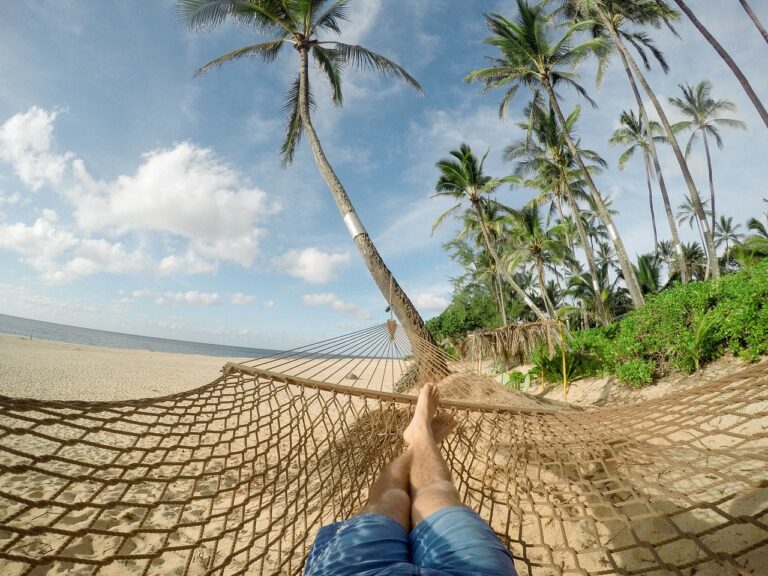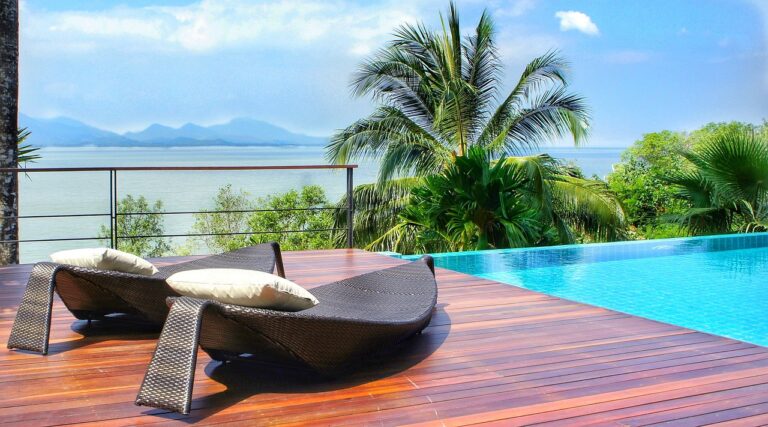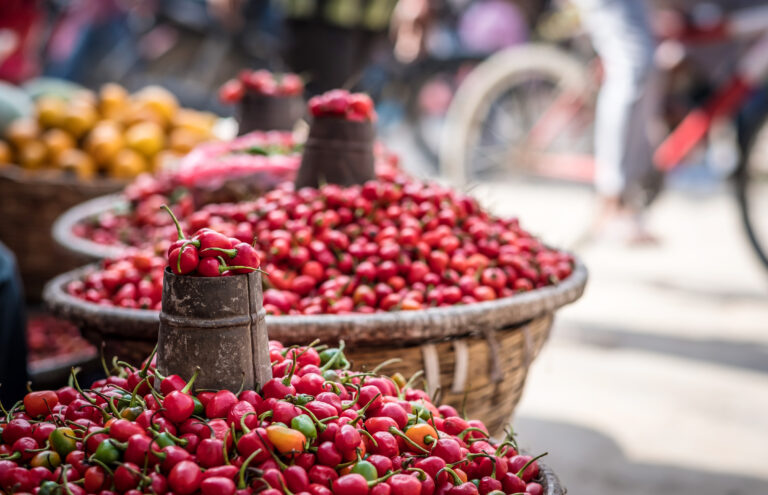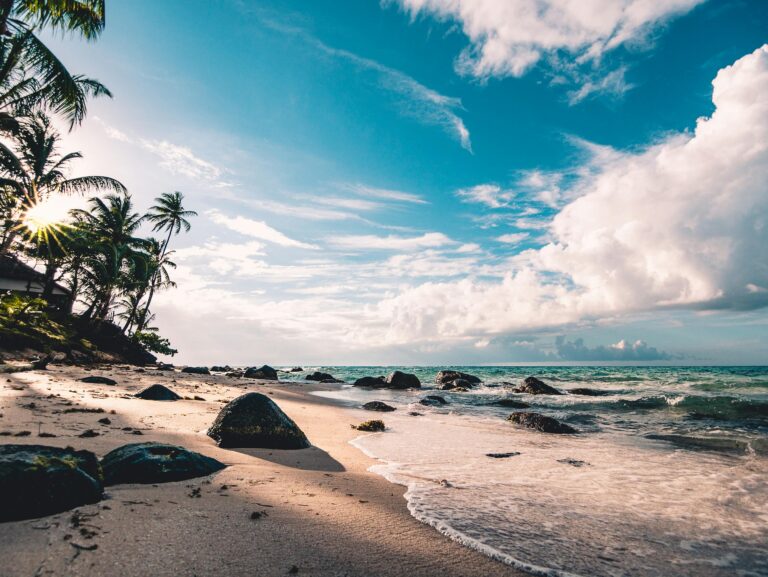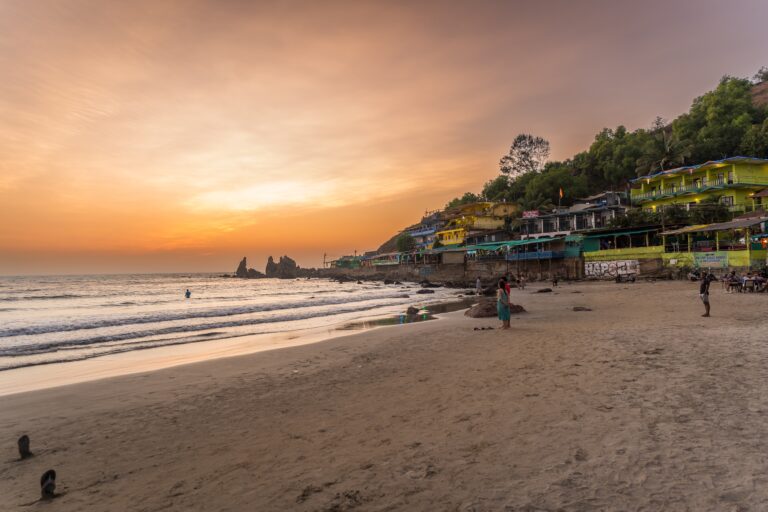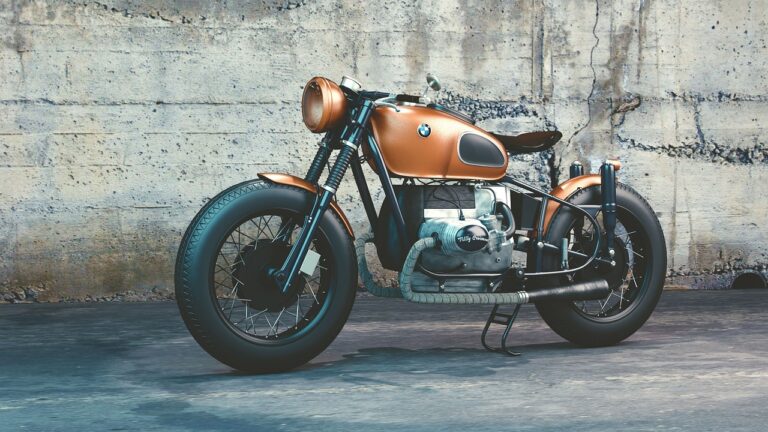Monsoon in Goa: North vs. South – A Comprehensive Guide

Explore the contrasting wonders of North and South Goa during the monsoon season. Discover family-friendly activities, serene beaches, wildlife encounters, and more. Hire a villa for an unforgettable experience.
Monsoon in Goa or Goa’s rainy season is between the months of June and August. The rains start in late May and extend up to September, but most of it is in the June-August period. Goa is on the Konkan coast of India, which receives a lot of rain. There is consistent rain with a few spells of thundershowers. Goa receives 34 inches of rainfall in June, 39 inches in July, and 20 inches in August. In an average year, there are 22 rainy days in the month of June, 27 rainy days in July, and 13 rainy days in August, making July the wettest month of the year.
The rain clouds come in from the Arabian Sea, hit the mountains of the Western Ghats and empty its water content. In July and August, during peak monsoon, rain showers can be especially prolonged. The three rivers of Goa – Chapora, Zuari, and Sal are all swollen. The ponds are also full. There is a lot of greenery everywhere, thanks to the rain, making Goa beautiful in the monsoon. The cloud cover looks good too over the Arabian Sea
Goa weather in Monsoon
Like every other coastal region, Goa receives plenty of downpours during the monsoon season. It can be a brief drizzle, heavy rain, moderate rain, and on some days, there is a chance of a thundershower as well. The days are humid, while the nights are cool and pleasant. The wind can pick up quickly when there is a cloud cover.
The average high temperature in Goa’s monsoon season is between 28.8°C and 30.3°C, while the average low is between 24°C and 24.7°C. August is usually the coolest month, as it is the farthest away from the Indian summer. The sea temperature is usually around 28°C throughout the monsoon.
Summer is a popular time for vacations, in India and Europe, because of the annual holidays. But unfortunately, it is too hot in Goa this time of the year. The monsoon rains provide a much needed respite, bringing the temperature down. The springs and waterfalls are in their full force, there is greenery everywhere, the beaches are clean and deserted, and river cruises become even more romantic. Plus, there are attractive off-season discounts as well. This is precisely why more and more tourists are now visiting Goa during the monsoon season
Beach and water sports to do in monsoon
The coast, accustomed to the tourist influx, is empty. All beach facilities, including many beach shacks are dismantled, especially the temporary structures that spring up close to the peak season. Many of those who work there go back to the villages, waiting for better weather and more tourists. However, the permanent structures, mostly in North Goa, are still open.
The south-west monsoon brings high waves, so swimming could be risky. There is also almost no snorkeling and scuba diving at Grande Island. Water sports activities are missing too. On the road, you may see puddles and some water logging. But they are cleared away quickly. Often, there are breaks when it doesn’t rain, and Goa looks very pretty in those intervals. If you are lucky, there could be no rain for 2-3 days at a stretch.
8 TOP REASONS FOR VISITING GOA IN THE MONSOON
- Super Cheap – Check the flight ticket prices. You can get a round-trip ticket for half the price, compared to the peak season. Those from Mumbai or Bangalore. Goa is just a road trip or a bus ride away. The best hotels and villas in Goa are also offered sometimes at a flat discount of 50%. Budget hotels are available at just INR 500 and that too, right next to a beach. You can ride a rented scooter for anything between INR 250 and 175.
- The Lushness – Goa is at its greenest during the monsoon. The rivers are all full, and so are the lakes and ponds. The waterfalls look gorgeous and are at their roaring best. Dudhsagar falls, a famous landmark, is simply breathtaking during the monsoon. A torrent of water comes down the falls – you can hear the roar from a distance. The trees are all green and the rice paddies look incredible.
- Nature – Walking and trekking is a pleasure this time of the year. There are many trails you can explore. Some of them take you over the Western Ghat Mountains. You can also visit the wildlife sanctuaries – Bhagwan Mahavir Wildlife Sanctuary, Netravali Wildlife Sanctuary, and the Mhadei Wildlife Sanctuary. There is also the Salim Ali Bird Sanctuary. Many birds come out after a shower. You can see them basking in the sunlight to dry off.
- Enjoy the Rain – Goa is magical when it rains. Getting wet in the rain is a fun experience. Or you can just relax, put your feet up and see the downpour. The cloud cover and rain over the Arabian Sea always looks so beautiful. Watch the raindrops as they crash into the sea. Take a long siesta, have some coffee, and enjoy the beachside in the evening. Or go on long walks when it is not raining. There are so many ways of enjoying Goa in the monsoon months.
- Monsoon Festivals – The festivals never end in Goa, even in the monsoons. Many Goans love to celebrate the arrival of the rains. Take for instance, the Sao Joao festival of June, and the mud games of Chikalkala. There is the feast of Patolleanchem too, and of course, India’s Independence Day on August 15th
- Adventure Sports – Swimming is not recommended in the rains because of the stronger currents and rough tides, but there are still plenty of adventure sports activities during the monsoon season. There is trekking, hiking, bird watching, and white water rafting, which is a hot favorite this time of the year. The monsoon makes the rivers swell, making white water rafting more challenging and exciting.
- Nightlife – Goa does not shut down completely in the monsoon. Many nightclubs are still open, hosting their fun parties and rain dances. Visit Mambo’s, Tito’s and the St. Anthony’s Bar in Baga, the LPK (Love Passion Karma) in Candolim, Curlies in Anjuna beach, and the bar of Park Hotel in Calangute. A few beach shacks too host their parties in the rainy season.
- Food – Most temporary shacks are open only during the peak tourist season. But you will still find the permanent shacks and the restaurants serving their drinks, seafood, Goanese and Konkan delicacies, and continental foods. There is an abundance of vegetables and fruits this season. Don’t forget to try the local delicacies, including the fruit punches, shakes, and mocktails.
Should one visit North Goa or South Goa during Monsoon ?
That depends on your preferences. North Goa will be more active between June and August. Many of the beach shacks, restaurants, pubs, nightlife, and street side stalls will be open, but there is less nature here, especially in the busiest areas.
The South on the other hand, will be more serene and peaceful. Many of the beaches here are lined with green palm groves. The south will certainly be more relaxing, and you can appreciate nature and the rains here more. But most of the activities, restaurants, and nightlife spots will be closed at this time.
Infrastructure for the locals, the banks, government offices, fruit and vegetable markets, supermarkets, are obviously still running in the monsoon. But much of the tourist infrastructure could be missing, particularly in the south. However, some of the big-name restaurants are open throughout the year, irrespective of the season, such as Mickey`s, Nostalgia, Martin`s Corner, and others. But in beaches like Agonda, Cavelossim in the South and Morjim and Arambol in the North, you may not find any of them. No beach shacks, nightclubs, or restaurants are open in these places. What’s still open is for the locals, not the tourists.
The major beaches of North Goa include Baga, Calangute, Candolim, Anjuna, Vagator, and Ashwem. The major beaches of South Goa are Palolem, Colva, Cavelossim, Benaulim, and Agonda. Choose the North if you prefer action. Stay in the Baga, Calangute, Candolim stretch, because this stays quite busy, even during the monsoon.
9 GOA FESTIVALS IN THE MONSOON YOU CANNOT MISS
- Sao Joao Feast of St. John the Baptist – Also called, “Sao Joao”, this is the fertility festival of Goa. There is traditional music, dancing, and boat races. There is a parade where you can see young people wearing a crown, feathers, and leaves. Men are seen jumping into wells to recover “feni” or local alcohol bottles. Pool parties are held too.
- Beach Side Party – In June, you should be at the Calangute beach for this exciting festival of live entertainment and music.
- Feast of Saint Peter and Paul – The locals build rafts and sail on Goa rivers, singing and playing songs.
- Feast of St. Anthony – St. Anthony’s statue is lowered to a well, even as the locals pray for a good monsoon and harvest. Monsoon is the harvesting season in Goa. Rice is planted this time of the year. The festival is celebrated on June 13th every year.
- Touxeachem Fest – Held at Santana Church or the Church of St Anne on July 29th. The newlyweds and childless couples visit the church and pray for a happy marriage and a child. It is sometimes referred to as the “Cucumber Feast” as the visitors offer cucumbers to St Anne.
- Chikhal Kalo – This fun festival has been celebrated for more than 150 years. There are many mud games, including mud fights with drums and bells playing in the background.
- Patolleanchem Feast – The Socorro Socio-Art and Cultural Association organizes this festival in August to celebrate Goan culture and India’s independence. There are performances by local artists. There is an exhibition.
- Bonderam Festival – The locals visit Divar Island, close to Panaji on the last Saturday of August. There is an interesting parade with traditional floats, a fancy dress competition, boat races, live music, and brass band performances.
- World Goa Day – A festival to celebrate the culture of Goa. There is music, showcases of some of Goa’s most famous traditions, and local cuisine.
Goa is pretty but I must say prettiest in the Monsoons. Tourists have started visiting Goa during Monsoon too so what are you waiting for?
FAQs
Is Goa safe during the monsoon season? While heavy rains are common, Goa remains safe for tourists. Just be cautious near water bodies and avoid venturing into the sea during rough weather.
Which region is better for families: North Goa or South Goa? Both regions have their charm. South Goa offers serene beaches and wildlife encounters, while North Goa boasts vibrant culture and historical landmarks.
Can I find good accommodation during the monsoons? Yes, many hotels and villas offer discounts during the off-season. Consider hiring a villa for a comfortable and memorable stay.

